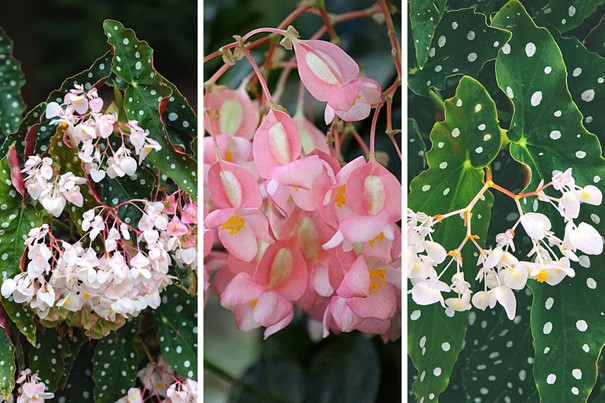Perfectly suited to indoor cultivation, the surprising begonia maculata, with its elegant mottled leaves, blooms long and abundantly. By adopting a few simple gestures, you'll be able to keep them for many years and see them bloom again.
Begonia maculata is an upright perennial whose stems droop to over 50 cm. Also known as tamaya or bamboo begonia, it is characterized by its long, serrated, spotted leaves and clusters of small, hanging flowers.
Origin of begonia maculata
Native to Brazil, begonia maculata is one of the bambusiform begonias. Its name refers to a governor of Haiti, Michel Bégon (18th century).
The begonia genus comprises almost 2000 species with a natural distribution on all five continents except Europe and Antarctica. The species, begonia maculata, described by Giuseppe Raddi in 1820, uses the Latin word macula, referring to its mottled foliage.
How to care for a begonia maculata?
Begonia maculata grows rapidly (30 cm per season) and is fairly easy to live with, provided it is given enough light and warmth. Its evergreen foliage, speckled with white and silver, makes it a highly prized decorative plant.
☀ Light
Keep your plant out of direct sunlight, or you'll notice that the tips of the leaves start to scorch and the color of the foliage fades. It likes indirect light, but can survive in less bright locations.
❀ Flowering
This species blooms from midsummer to early autumn, producing clusters of white or pink flowers that can last up to six weeks.
💧 Watering and maintenance
Begonia maculata doesn't like to stay dry for too long. It likes slightly damp soil. But beware of soggy roots - no plant likes that.
Since it needs regular moisture, dehydration is a common problem that can be accelerated by excessive light or heat. Symptoms of overwatering include moldy soil, yellowed lower leaves, brown, yellow or black leaf spots, wilting and rotting stems/roots.
Specimens placed in darker areas need less water to live.
🌡️ Temperature
Begonia maculata like to be kept warm. In a room at around 20°C. Beware: your begonia prefers a humid environment, but will not tolerate misting. Use a pebble tray or humidifier instead.
☠️ Toxicity
This plant is classified as toxic for dogs and cats. The toxins are mainly present in the roots, but the stems and leaves can cause mouth irritation.
🦟 Diseases, pests and parasites
Keep an eye out for the usual pests and diseases.
🗑 Potting and multiplication
Pruning: if you want to keep your begonia maculata compact, you can prune it in winter during the resting period. If it gets too big, cut it back to 50 cm high, always 1 cm above an eye.
Repotting: This type of plant prefers to be a little cramped in order to flourish. Don't repot too quickly. Every three years in spring, using "houseplant" compost and a pot of the next size up with adequate drainage.
Propagation: Propagation is very easy by cuttings. Simply cut under a leaf to ensure the stem is intact and place in water. You can then watch the roots grow and when you have around 5 cm of roots, your plant is ready to be planted.
Common problems to avoid
Begonia maculata is not without its problems, but these are similar to those encountered by most houseplants.
- Brown leaf tips and edges. A sign that the plant is drying out too much, or that the air is a little too dry, or that it is receiving too much fertilizer.
- Powdery mildew. May occur if begonia is kept in too dark and too cool a place.
- Root rot. This happens if the plant is over-watered.
- Sensitive to draughts. Because of its thin leaves, begonia maculata doesn't like draughts - neither hot nor cold. So keep it away from heating and air-conditioning systems, and outside doors.
Browse the collection



